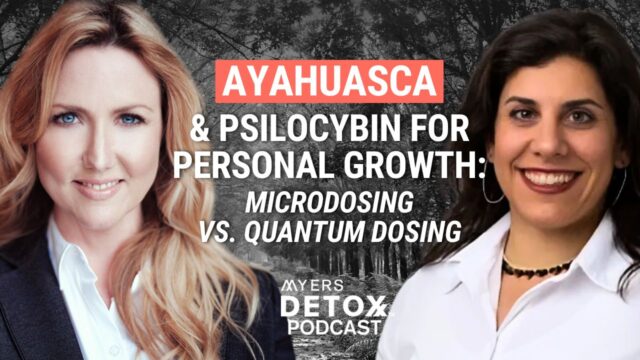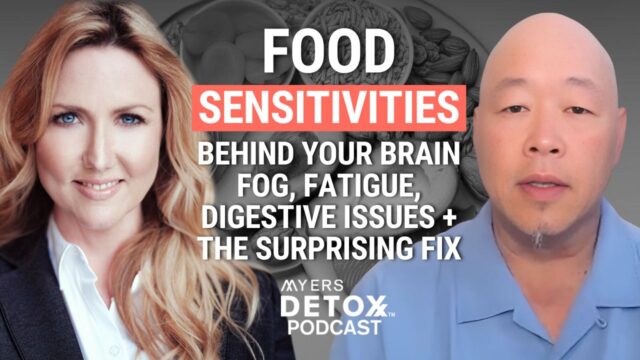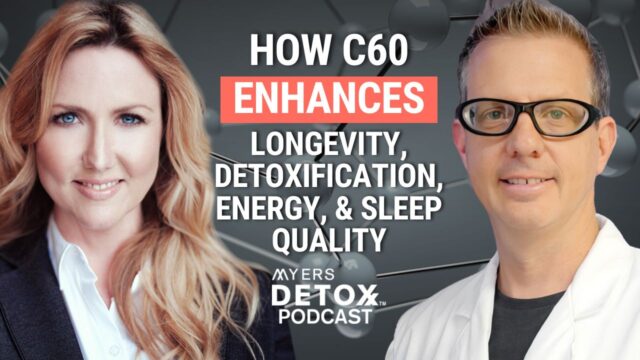Across the globe, every one in five people suffer from chronic pain. That’s around 1.5 billion people who wake up in pain every day[1].
The Western medicine model traditionally treats pain with a slew of remedies, including opiates and other pain-management medications. Unfortunately, none of these traditional remedies seem to get to the root of the problem, and many of them create an even bigger problem – addiction to pain meds.
How can it be that a problem that’s so widespread remains a mystery to so many health professionals?
In this article, you’ll learn:
- How chronic pain is connected to your mind
- How traumatic experiences can impact your pain just as much as your physiology
- The truth behind chronic pain (hint: it’s not the same as acute pain)
- The long-term impact of chronic pain
- Where the root of pain lies, and how to heal chronic pain once and for all
Chronic Pain: Where Mind and Body Meet

In the last several years, researchers have discovered something that traditional systems of medicine like Ayurveda and Traditional Chinese Medicine (TCM) have known for thousands of years – there is no disconnection between the mind and the body.
While it may sound strange, this information is incredibly empowering. By understanding the emotional and psychological components of pain, we now have an inroads to the root of the problem.
In terms of chronic pain, we are now seeing a new model for research called the biopsychosocial model of pain. This new model describes pain as a dynamic integration among physiological, psychological, and social factors that reciprocally influence one another[4].
The biopsychosocial model shows that when people in chronic pain have brain imaging scans done, the images show much more activation in the emotional parts of the brain when compared to people with acute pain. This means that chronic pain is not only derived in the brain, but it’s rooted in your emotional centers. According to your nervous system, chronic pain is more like an emotion that you feel as opposed to simply an unpleasant sensation.
The Truth Behind Chronic Pain
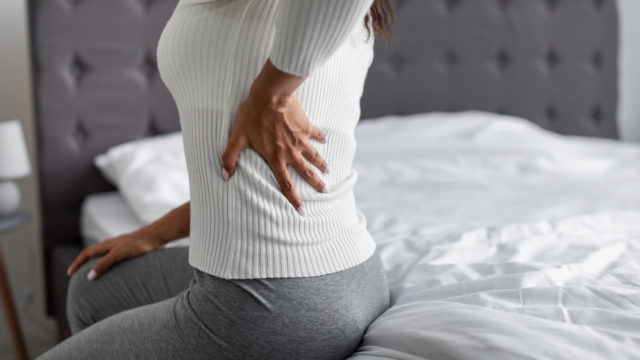
Many people, both health professionals and common folk, assume that chronic pain is simply acute pain that hasn’t been resolved. This would mean that chronic pain follows a similar path to acute pain involving inflammation, immune activation, and tissue sensitivity. The primary difference being that chronic pain is prolonged, and acute pain resolves rather quickly.
This assumption, however, is incorrect.
While acute pain is understood to serve a very practical purpose (alert your body that something is wrong), chronic pain serves no physiological purpose at all. In fact, scientists are now discovering that chronic pain involves much more than a physiological response; it’s also inherently psychological[2].
To highlight this difference, let’s take a look at the signaling pathways of acute vs. chronic pain. Research shows that acute pain signals rise up the spinal cord to reach the brain; therefore, it’s some aspect of your physical body that creates pain messaging and alerts your brain to what’s going on. On the other hand, chronic pain signals follow the opposite path – descending down from the brain and often without any physiological trigger. In other words, chronic pain most often comes from your brain, not your body[3].
This throws the theory that chronic pain is purely physical right out the window.
How Acute Pain Becomes Chronic
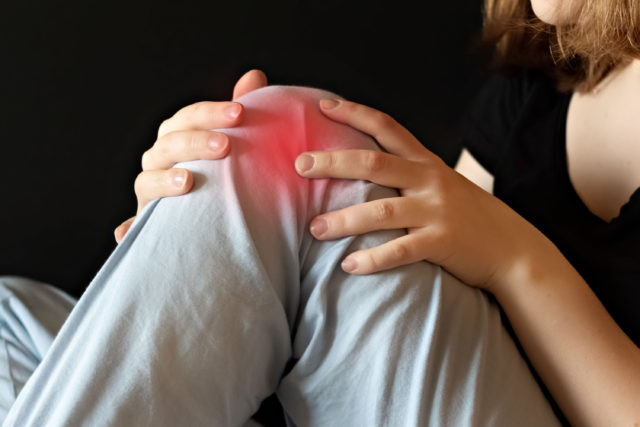
When pain sets in, there are two paths by which it can follow; resolution or the development of chronic pain.
In the case of chronic pain, a process called central sensitization occurs. With central sensitization, your nervous system goes through a wind-up process that makes you more vigilant to pain and puts you in a higher state of reactivity. In other words, you become more sensitive to pain in general. This means that activities or less significant distresses can become magnified and produce unnecessary pain signals[5].
As your threshold for pain decreases, chronic pain ensues, not due to physical assaults but rather due to a hyperactive nervous system.
This process again highlights that chronic pain’s genesis is inherently psychological – not physical.
Now here is where things get interesting – research shows that central sensitization is more likely to occur in someone with a pre-existing state of nervous system imbalance, like those with high stress or anxiety levels.
Furthermore, studies show that early life traumas or clinical depression are predictors of chronic pain later in life[6].
According to Dr. Bessel van der Kolk, a well-known trauma researcher: “Research has shown that, under ordinary conditions, many traumatized people, including rape victims, battered women, and abused children, have a fairly good psychosocial adjustment. However, they do not respond to stress the way other people do. Under pressure, they may feel (or act) as if they were traumatized all over again.”
In other words, the likelihood that your nervous system will wind up in response to pain (or stress) is much higher if you are holding on to unresolved trauma.
The Long-Term Impact Of Chronic Pain
Maggie Phillips, author of Reversing Chronic Pain, explains: “Whether or not trauma was connected to the event or condition that originated their pain, having a chronic pain condition is traumatizing in and of itself.”
If you’ve experienced pain that hasn’t resolved easily, you know how insidious it can be. It’s not only the physical sensation of pain that wears on you but the frustration that comes with an imbalance in your body that won’t resolve.
Perhaps you can’t carry out your normal daily activities, or maybe you have had to give up a hobby that involves movement you can no longer engage in.
Regardless of where your pain is or how it’s holding you back, chronic pain can quickly become the master of your life – imprisoning you in your own body.
Many people with chronic pain develop emotional imbalances like depression, anxiety, mood swings, and even cognitive challenges as the pain takes over their perceptions. And, of course, as your nervous system becomes even more imbalanced due to these emotional changes, it upregulates central sensitization, causing a snowball effect of pain and misery.
So, how do you get out of this seemingly unending loop?
You have to deal with the emotional side; your target has to move from pain management to nervous system regulation.
Emotional Release As Your Doorway Out of Chronic Pain

As you’ve learned, your nervous system is intimately involved in your perception of chronic pain. The longer the pain goes on, the more involved your nervous system becomes, and the more sensitive your nervous system becomes, the more cued up you are for pain.
While pain meds may provide a short-term reprieve, the resolution of chronic pain takes a more holistic approach.
For some people, the cycle of chronic pain began with an injury that didn’t resolve and became a psychological burden over time. However, more often than not, chronic pain comes on as a result of a dysregulated nervous system that was primed for faulty wiring.
So the question becomes, why are our nervous systems dysregulated in the first place?
The most straightforward answer: unresolved trauma and emotional challenges.
When we have a traumatic experience or even just push emotions down without allowing ourselves to express how we feel fully, the energy and pain of these experiences get stored in our bodies and wreak havoc on our nervous system. You may be able to tell yourself you’re doing just fine, but subconsciously your body knows that there are unprocessed emotions that need to get out.
You may be able to lie to yourself, but your nervous system and your subconscious are always talking – and their only goal is to keep you in healthy balance. Stuffing away emotions and traumas is like building a dam in a rushing river; it’s only a matter of time before the dam breaks and everything you’ve been pushing aside comes rushing out. Meanwhile, that “dam” (your nervous system) is taking a beating every day as the water crashes up against it.
To resolve chronic pain, you need to remove the dam and allow your mind and body to process your emotions fully. The result will be a balanced and healthy nervous system that’s no longer primed for pain and instead becomes primed for healing.
Emotional Detox: Your Mind, Body, and Energy In Balance
If what you’ve read here resonates with you, it may be time for an emotional detox.
For many people, the idea of digging into their past and releasing emotions is a scary thought. What will you feel? Can you handle what comes up? What if it only makes things worse?
I’m here to tell you that emotional detox does not have to be a painful process. In fact, when you take a holistic approach to release emotions by focusing on your energy, physiology, and your mental health all at once, releasing old traumas and emotions becomes natural and easy. You don’t relive or re-experience the trauma.
This is exactly why I created my Emotional Detox Program. In this course, I walk you through various modalities that touch on all three aspects of you (mind, body, and energy) and provide step-by-step guidance for gently releasing old stuck patterns.
Many people feel frustrated on their healing journey, and often end up digging thier heels in because they just can’t take any more failed attempts. This is due to the fact that almost all healing modalities out there focus on only one or two of the three pillars.
In the Emotional Detox Program we get to the root of your emotional pain by releasing the stuck emotions that keep you in a loop. In this program you’ll:
- Remove imbalances and get to the root of physical health problems that you’ve been battling for years.
- Optimize your mood, allowing you to wake up in the morning feeling light, happy, and excited about the day ahead.
- Boost your energy, releasing negative energy that blocks you and restoring your vitality and motivation.
- Improve your overall health (digestive, heart health, and even skin health).
- Strengthen your mind, allowing you to think more clearly and be more present in your life.
We’ll get to the root of your emotional pain, bring awareness and understanding there, and then engage in practices that allow you to feel free from your past. In doing so, your nervous system will finally get the reprieve it’s been waiting for, and chronic pain will have the space it needs to resolve.
Takeaway
As modern medicine continues to get on board with the mind-body model of health, we’re seeing amazing advances in healing from a variety of conditions, including pain.
If you’ve been struggling with chronic pain, you likely are frustrated with many options you’ve tried that don’t work very well or don’t provide a long-term resolution to pain. You feel the twinge of anxiety every time your pain flares up, and you’ve built a wall around yourself to protect your pain from becoming triggered.
The good news is that there is a way out of the pain cycle. By focusing on your nervous system and releasing the emotions that keep you tense, both your mental and physical health can begin to find their way back into balance. If you’ve tried many physical solutions, but are still in pain, it’s time to focus on an emotional release.
Going it alone can be hard, and most people don’t even know where to start when it comes to releasing old emotions. If you’re ready to make big changes but don’t know where to start, join my community by signing up for my Emotional Detox Program and you’ll find that your pain will begin to dissipate as old emotional baggage is released that may be at the underlying root cause of your pain.
*These statements have not been reviewed by the FDA. The Emotional Detox Program is not intended to diagnose, treat, cure, or prevent any disease. It is not intended to replace any medication or healing modality prescribed by your medical doctor.








